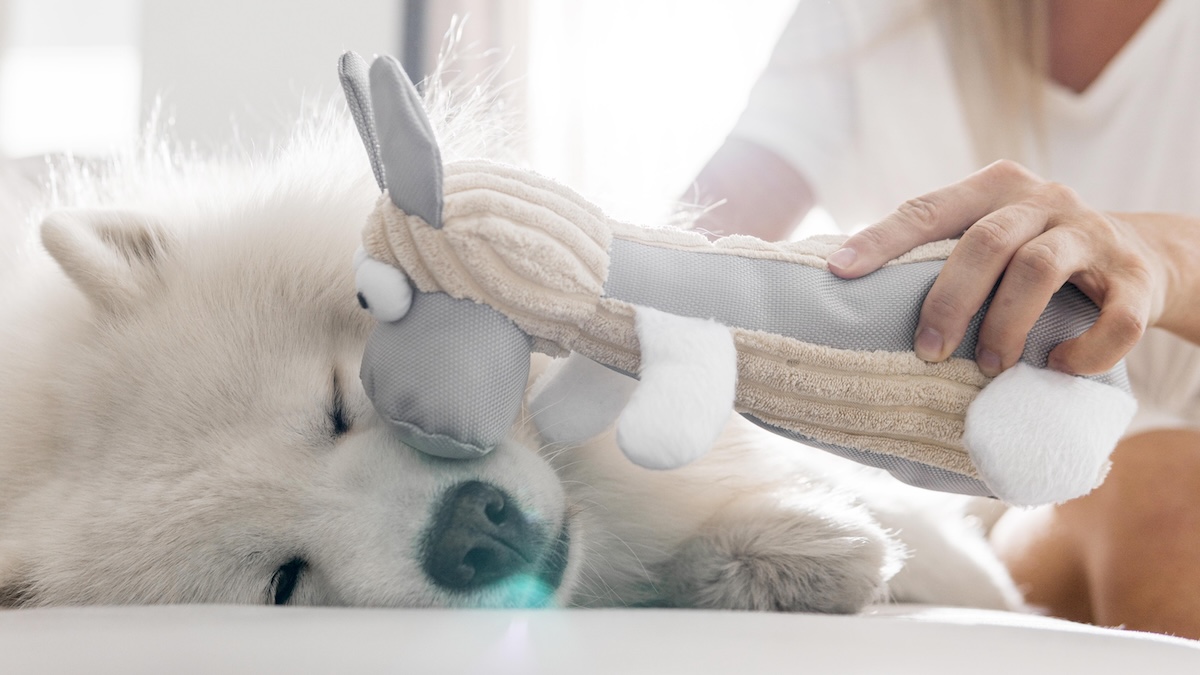Just like certain human families have a predisposition to specific health conditions, the canine world also sees some breeds more prone to particular ailments. A common example of such orthopaedic problems that often arise in some breeds of dogs is the luxating patella, where the knee cap moves out of the usual groove.
But why are some dog breeds more likely to get a dislocated kneecap? The answer lies in a fascinating interplay of genetics, conformation, and how various breeds have been shaped over generations.
Let’s break it down by breed:
- Small and toy breeds such as Pomeranians, Chihuahuas, Yorkshire Terriers, Miniature Poodles, and Toy Poodles bear the brunt of the issue. In England, Pomeranians have the highest breed‑specific prevalence, around 6.5 %, with an odds ratio of 18.6 compared to cross‑breeds.
- Yorkshire Terriers, Poodles and Chihuahuas are higher-risk purebreds; mixed‑breed dogs aren’t off the hook either, showing 27 % prevalence.
- Bulldogs and French Bulldogs, usually known for other health issues, also show elevated patellar luxation risk. Bulldogs have nearly triple the risk relative to the general dog population, with about 2.9 % prevalence, and French Bulldogs have an odds ratio of 5.4.
- Cavalier King Charles Spaniels often develop luxating patellas by 4-6 months of age.
- Large breeds, notably Labradors, Akitas, Shar Peis and Great Pyrenees, aren’t immune, though risk is lower; it’s rising.
Why These Breeds?
Anatomy explains it. Small dogs often have a shallow femoral groove or misaligned limb geometry from birth. That structural misfit makes the kneecap prone to slipping. Genetics is a major player, breeds like Pomeranians show up to 75 % prevalence in some regions.
Another twist: As luxation progresses, the risk of secondary issues, such as cranial cruciate ligament tears, jumps to 15–20%.
A 6‑Week Recovery Guide
Here’s a week‑by‑week plan that aligns with local veterinary best practices and with UAE guidance from the Ministry of Climate Change and Environment (MOCCAE) for pet health standards.
Week 1 – Veterinary Assessment & Planning
The vet confirms the diagnosis and grade (I–IV). Grade I often requires monitoring. Grade II–IV usually calls for surgery.
Week 2 – Surgery & Rest
If surgery’s agreed (trochleoplasty, tibial crest transposition or soft tissue realignment), make sure that the area is comfortable and free of pain and tension.
Week 3 – Gentle Mobilisation
Start passive range-of-motion exercises as advised. Do not take the stairs, jump, and play roughly. The monitoring of food and hydration is central to the healing.
Week 4 – Controlled Activity
Short, leash-walked outings. Muscle tone can also be regained through a low-impact physical therapy performed regularly on a daily basis. Once limp or swelling occurs, continue observing.
Week 5 – Building Strength
Increase gentle walks, continue therapeutics like hydrotherapy if available. Become weight conscious in order to avoid straining joints.
Week 6 – Re-evaluate & Maintenance
The progress is re-checked by the vet. When getting better, start to do more normal activity. In case floppiness or pain persists, it is worth going to the next level of diagnostics, such as X -rays.
Fast evaluation will result in well-informed decisions. VETCARE’s local presence, specialist team, and full diagnostics package mean fewer delays and more confidence. Following a structured recovery minimises complications like arthritis or cruciate tears.
Preventative Measures You Can Take
- Breeding awareness – Avoid breeding dogs with luxating patella; it’s genetic.
- Early screening – Have your pup examined every 6 months. Early grades can respond to physio instead of surgery.
- Maintain ideal weight – Obesity intensifies joint issues. Large‑breed dogs with luxation also have cruciate problems.
- Safe exercise – Low‑impact activities help build muscle without overstressing joints.
Quick Stats at a Glance
- Around 7 % of puppies are diagnosed with luxating patella.
- Small breeds have up to 12× the risk compared to large breeds.
- Medial luxation makes up 75–90 % of all cases.
What This Really Means For Dog Owners
- If you own or plan to own a predisposed breed, be proactive:
- Schedule an early orthopaedic check with a vet at VETCARE.
- Follow the six-week plan post‑surgery or management.
- Stay informed about breeding implications.
Luxating patella sounds scary but early detection and consistent care make a big difference. With the right plan, smart owners set their pets up for a life of walking, jumping, and living well.



